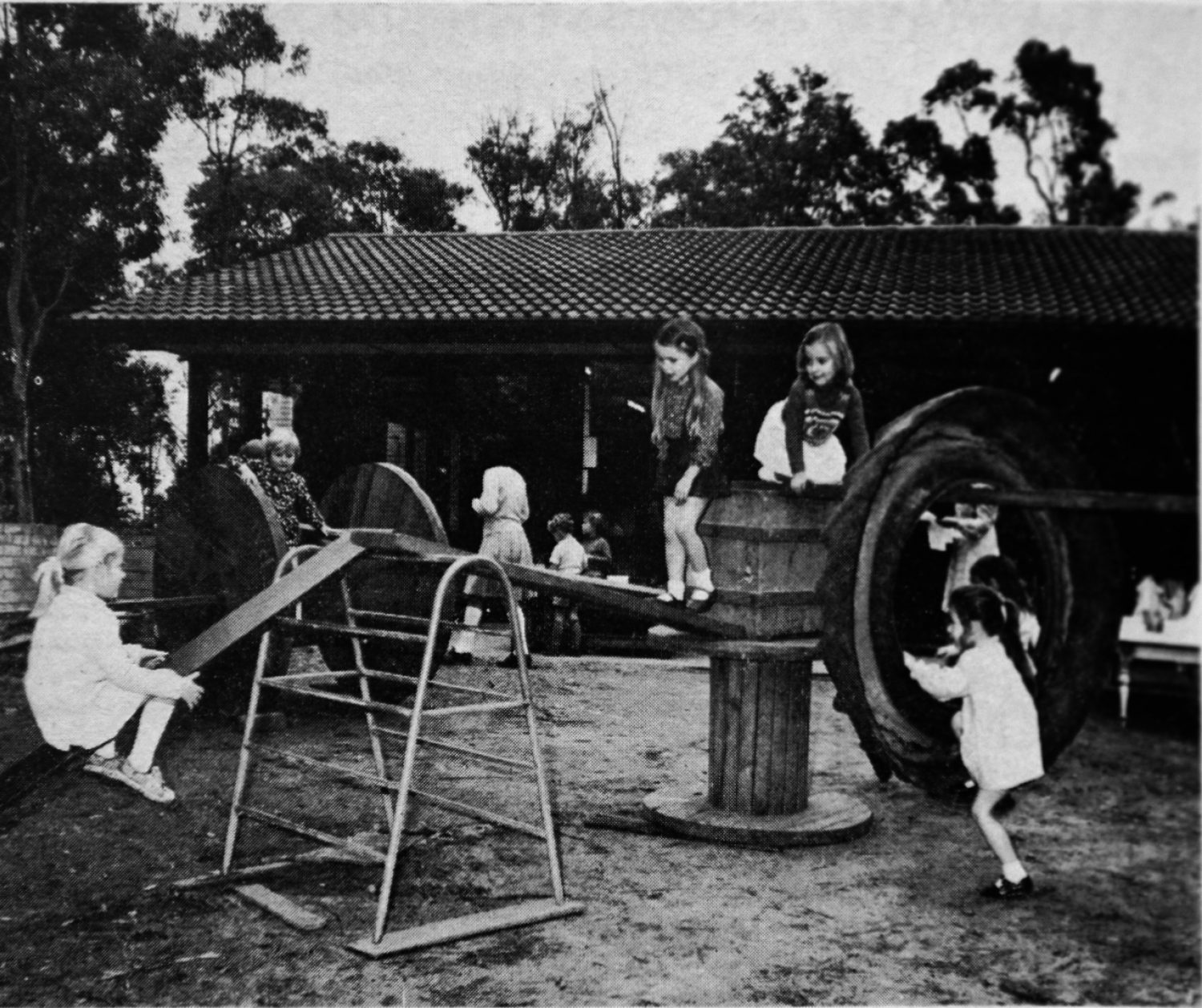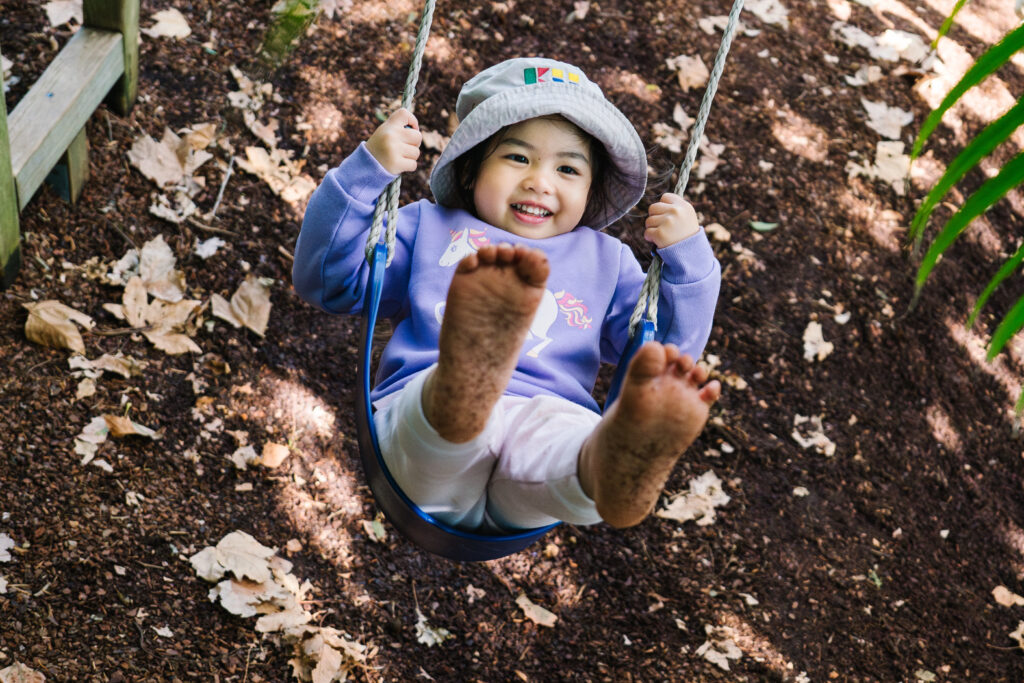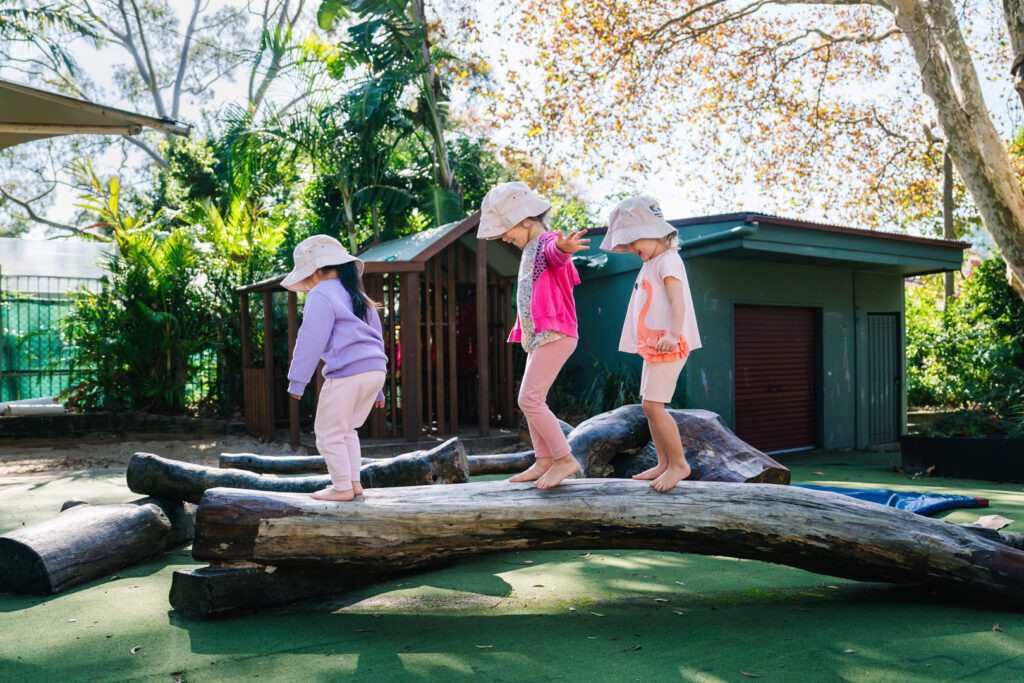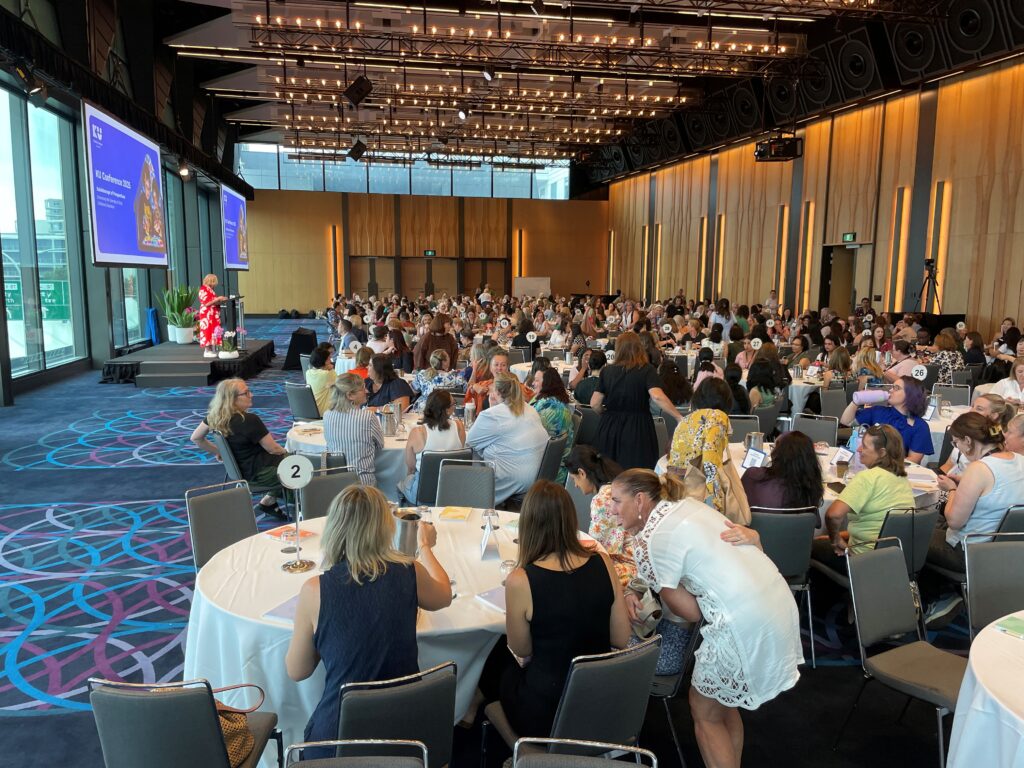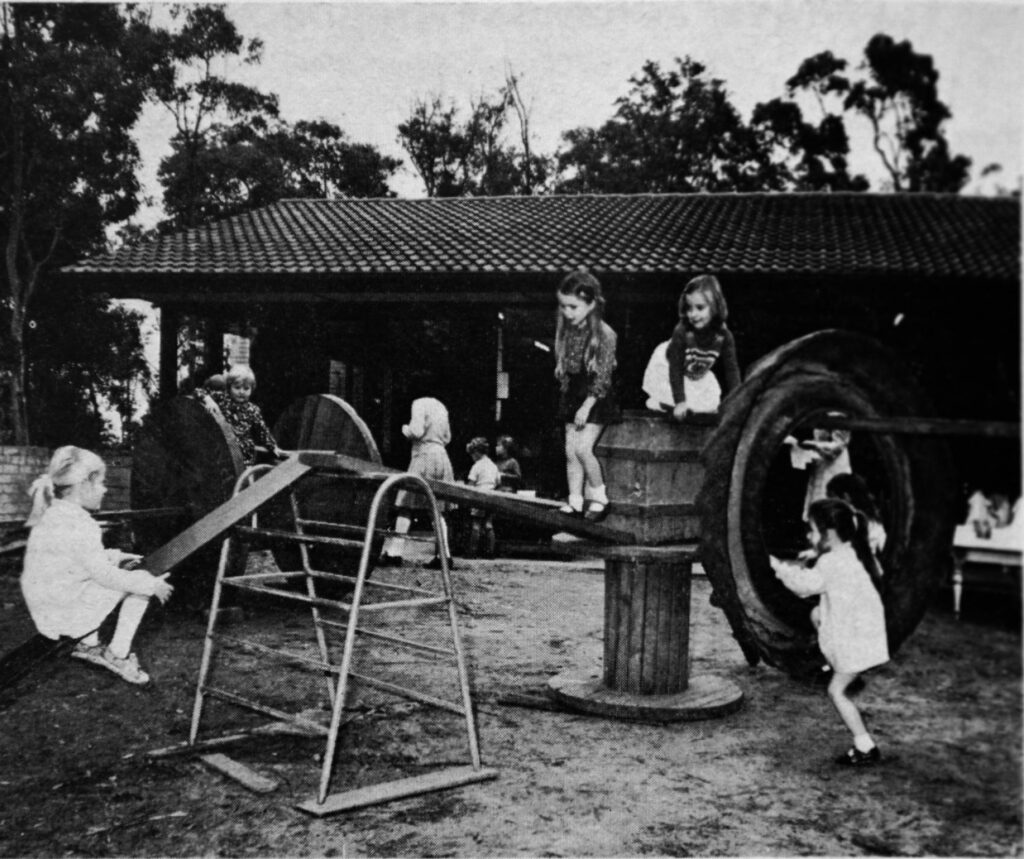

Kindergarten Union objectives
In 1971, the Kindergarten Union revises its objectives as follows:
- To provide Preschool Education for children of three and four years of age.
- To understand and provide for the needs of young children.
- To foster happy family relationships.
- To provide, through their Preschool Centres, medical and dental services to ensure good health for school days.
- To train Kindergarten Teachers through the provision of a Teachers College providing a 3 year full time course in Early Childhood Education.
- To safeguard the interests of children everywhere.
The impact of the Women’s Movement
The 1970s poses a serious challenge to the values espoused by many in the Kindergarten Union. The Women’s Liberation Movement gains momentum and many women (and their male supporters) agitate for long day care, rather than preschools, to support mothers’ participation in paid labour. Many (though not all) within the Kindergarten Union oppose long day care as being detrimental to children’s wellbeing.
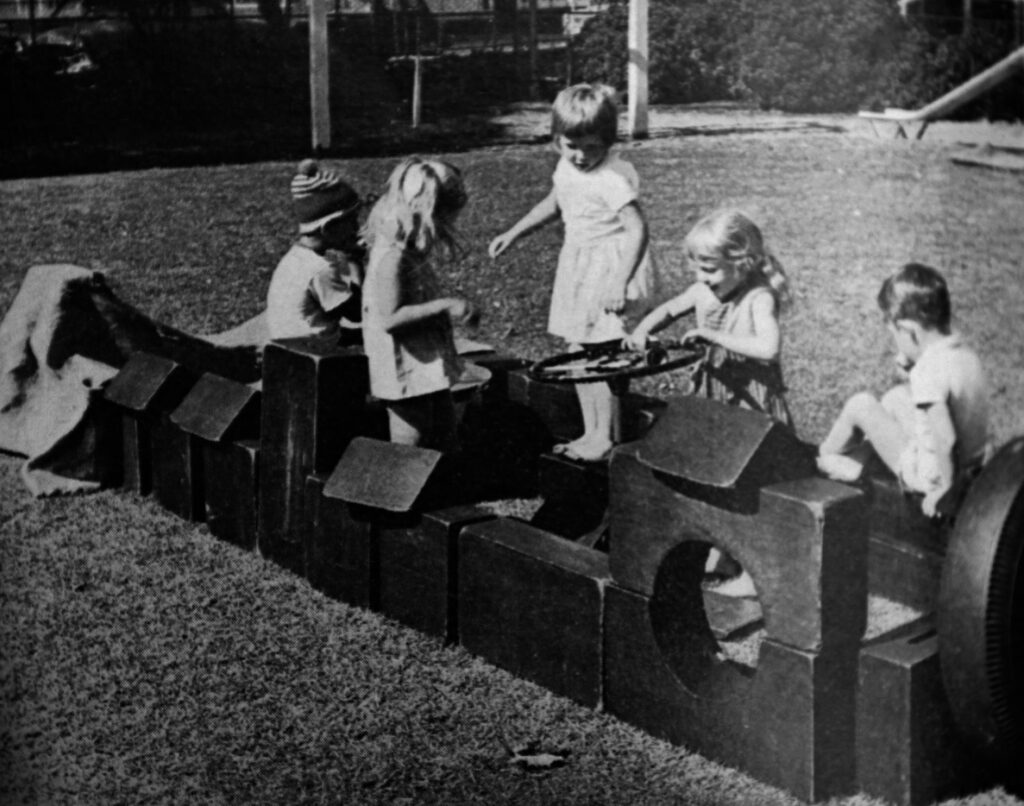

A new policy landscape
The Commonwealth Government increases its role in the provision of early childhood services by introducing the Child Care Act in 1972. This enables the government to fund community based long day care services. A number of policy reviews ensue, including the Care and Education of Young Children Report of the Australian Preschools Committee to which the Union contributes “many hundreds of man-hours…in compiling submissions…and answering questions…”
In 1976, the Kindergarten Union President, Barbara McNulty laments the policy confusion surrounding early childhood services:
“1976 was again a year of concern, constraint and confusion…since the entry of the Australian Government into the field of Child Care Services we have been responsible to four departments: Labour and Industry, Education, Prime Minister and Cabinet, and currently, Social Security.”
Over subsequent reviews, it becomes clear that funding for preschool will not be favoured over funding for long day care. Indicating a change of direction is afoot for the Union, in 1977 Lois Barker, the Kindergarten Union’s Director of Preschool Services writes:
“Is this [preschool] the only way in which the needs of children and their families can be met? Or can we look to a variety of ways to achieve our objective-providing an element of full day care, day care, sessional care emergency and occasional facilities…?”
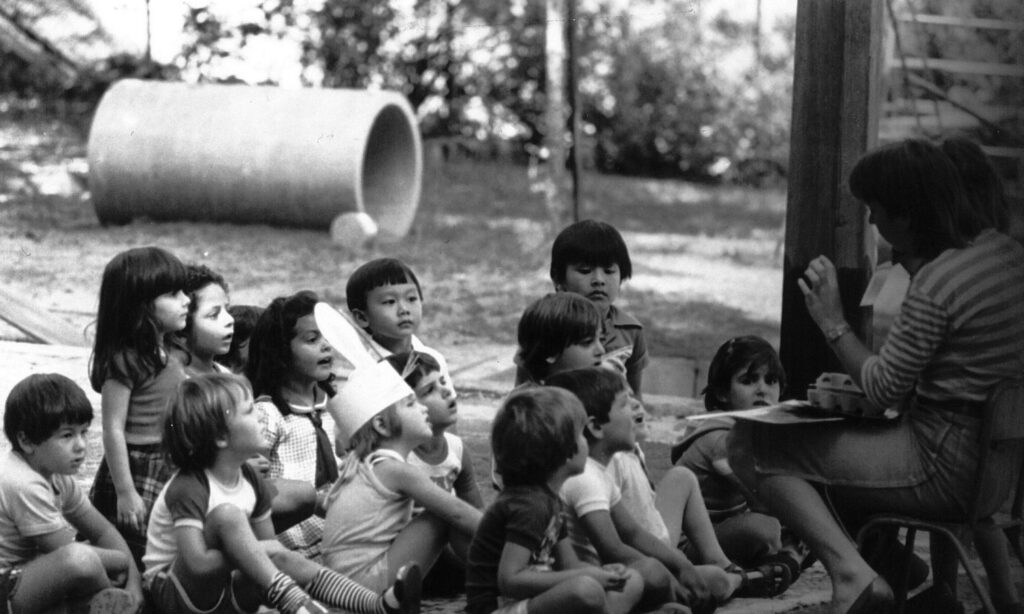

Other events
The 1970s begin with the NSW Industrial Court handing down a new award, ensuring that Kindergarten Union trained teachers are paid the equivalent of 2 year trained primary teachers employed by the Department of Education. The NSW Government in turn increases its subsidy (but not enough to cover the award), while funding for the Union moves from the Department of Education to Department of Child Welfare.
- 1971: The playgroups movement gains momentum and the Union provides support to the Playgroup Association.
- 1971: The Sydney Kindergarten Teachers College becomes autonomous.
- 1973: The Rural Advisory Service is discontinued, subsequent to the formation of the NSW Country Preschool Association.
- 1975: Centres open with Housing Commission support in Hebersham, Shalvey, Macquarie Fields, and Windale.
- 1976: The Outpost Newton (the first purpose-built kindergarten in the Southern Hemisphere) is sold to the Royal Prince Alfred Hospital and demolished for hospital expansion.
At the end of the decade, Teacher training is dropped from the Kindergarten Union Objectives.

